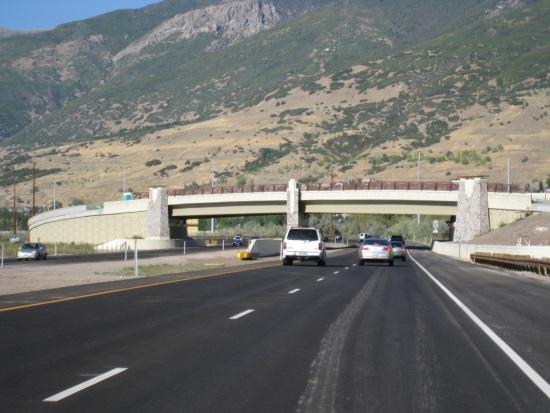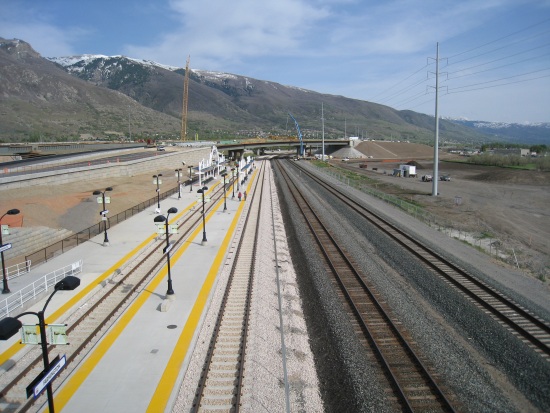
With the opening of Legacy Parkway and FrontRunner now in service for a few months it is instructive to compare some numbers. Note that my rickety figures are approximate, if there is interest I will spend some time to produce more accurate numbers. However, there is such a large difference between both sets that the conclusions would still be the same.
Each project cost approximately the same amount to build. FrontRunner carries 7,800 passengers a day and Legacy Parkway around 30,000 vehicles a day. In addition, over 1,000 FrontRunner passengers previously rode buses. I don’t have any numbers for how many Legacy Parkway riders are in carpools.
FrontRunner made a slight dent in congestion by removing a small percentage of the traffic from the 140,000 daily car trips along I-15. Legacy Parkway cleared I-15 congestion on its first weekday in operation.
So why build FrontRunner? Maybe it will be cheaper to run. I have stated that both projects cost about the same to build. Unfortunately because of irresponsible court action by environmentalists the Legacy Parkway cost much more to build than it should have. The money that would have been saved could have been used for maintenance for many years. I have been told that rail lines cost much less than roads to maintain. However, road maintenance is paid for by the users of the roads whereas FrontRunner receives money from outside the system from sales taxes.
What about environmental concerns? This is a plus for FrontRunner in terms of pollution and also the smaller footprint of the rail lines compared to a 4 lane parkway. This advantage may be eroded in the future as more electric cars take to the highways.
What about people? Clearly there are not normally any travel delays on FrontRunner. You can do something else while on your journey, which is just as well because your trip will likely take longer. You are safer, at least from other traffic, if not from the surly looking ruffian staring at you from six feet away. You save money because everyone pays to subsidize your ride. Depending on your circumstances you could eliminate a car from your household. If you don’t drive at all FrontRunner gives you more travel options.
So there you have it, economically FrontRunner doesn’t add up. Congestion wise its a flop. But for people and the environment it clearly has the edge. Both Legacy and FrontRunner do have one thing in common — they are trying to solve the wrong problem. They are trying to get more and more people to their work. The real problem to be solved is how do we bring the work to the people?


That makes sense. Great explanation and comparison. I think you hit the nail on the head: “Both Legacy and FrontRunner do have one thing in common — they are trying to solve the wrong problem.” Another advantage of FrontRunner is providing the alternative. How many Americans can’t drive, because of economic, inability (age, disability), or other reasons?
Thank you for your comment. So as someone who has insight into urban planning, would you do anything differently with the money that was spent on Legacy and FrontRunner? The sum is about $1.4 billion.
Yes, I would invest in economic develop in each of the municipalities along the transportation corridor. Everyone knows that Legacy is a short-term solution, and sure enough, we are just building more roads: http://www.udot.utah.gov/westdavis/. I believe we should be investing in business and office centers in our own communities, rather than wasting our resources on moving people along a very restricted corridor.
I like to phrase it as: “Move bits, not bodies.”
Derek,
What was said in the story by the professor is exactly what several engineers at my work have been saying all along about FrontRunner. If the objective is to take cars off of I-15 then Legacy is a success story and FrontRunner is a failure. It wasn’t until I saw the difference that Legacy made to the traffic that I was convinced.
However, it still seems brain dead to me to be moving all those people instead of allowing many of them to telecommute.
Unfortunately, the goal was not to take cars off I-15, it was getting people to Salt Lake City. If the goal had been to take people off I-15, they would have created public-private partnerships with companies to invest in satellite offices, telecommuting options, carpool incentives, and so-forth. The State continues to try and get people to and from Salt Lake City. This will only last so long, as the northern stretch of the Wasatch Front is very limited by mountains and water.